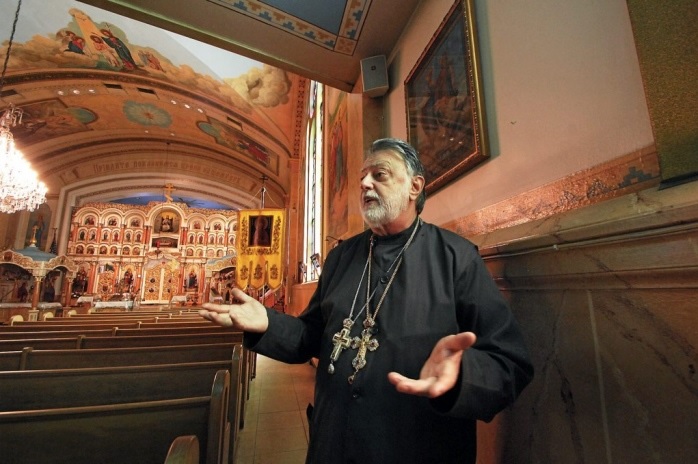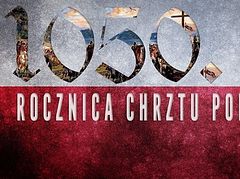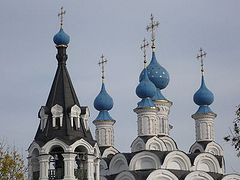Source: The Scranton Times-Tribune
Septembe 4, 2016

The three bulbous cupolas atop St. John the Baptist Russian Orthodox Cathedral point to the heavens, shimmering beacons raised high above the treelines of Mayfield.
Each week, faithful crowds gather in the Hill Street church to practice the New Testament-focused form of Christendom, as people have since 1891.
As St. John’s prepares to mark its 125th anniversary with services on Saturday, Sept. 17, and Sunday, Sept. 18, its devout members and clergy reflect on the trials, triumphs and growth that brought the church to this remarkable milestone.
“If I don’t know where I came from, I don’t know where I’m going,” said the Rev. John D. Sorochka, rector of the Upvalley church. “That’s why it’s so important to know our history.”
The beginning
The origins trace back to the arrival of Carpatho-Russian immigrants in Mayfield in 1878, who held services in the Stec home, located behind the present-day cathedral, according to historical records. The following year saw the formation of the church’s founding society, the Brotherhood of St. John the Baptist, which continues today.
With scant resources, the organization constructed a parish school building in 1889, which served as a functional hall for all manner of events and gatherings.
Uniting parishioners
It was important to establish the multi-purpose center before they built a proper church to keep the people united, while also best serving their needs, the Rev. Sorochka explained.
Two years later, the original St. John’s Church was finished and dedicated, and over the next dozen or so years, parish life flourished with the introduction of a cooperative store, a drum and bugle corps, Boy Scout Troop 85, a church library and the “Russian Hose Co.,” later known as the Mayfield Hose Co.
“I think those who started this 125 years ago would be very much surprised — pleasantly so — what the seeds they planted have grown into,” the Rev. Sorochka said. “They were living for the future, of course, but they weren’t hell-bent on being the future.
“What they wanted to do was build a foundation,” he said. “On that foundation, they knew something was going to grow. I don’t think they knew the magnitude, the prestige, that this particular church (would have) in the life Orthodoxy and the life of this town.”
In 1930, the structure of the old church was lifted onto Maple Street next to the property, where parishioners continued to worship as construction began on a new building, later unveiled in 1933.
The church’s interior holds richly ornate design, from the 24-karat goldleaf on the Royal Doors carved by the Jubinsky brothers, who lived across the street, to the Austrian crystal chandeliers that dangle above the pews. Murals dating back to the 1940s and stained glass windows depicting Jesus Christ and St. Barbara highlight theological teachings of the faith, while other icons and relics serve as reminders of what lies beyond mortal life.
St. John’s houses physical remains of the true cross, apostles and church saints, including a portion of St. Edward’s skull, St. John of Shanghai and San Francisco and St. Tikhon, among others.
“There’s a calm and a peace that comes over you,” the Rev. Sorochka said of walking into the cathedral. “You leave earth and enter a piece of paradise. Here, we have unity and calm with God.”
Mayfield resident Randy Horhutz, a parishioner since 1938, spoke of his deep connection to the church, which never wavered, even when his 30-plus years in the Navy shipped him great distances.
“The church was my anchor,” Mr. Horhutz shared. “I made a great deal of effort to come back for Christmas and Easter holidays. Whenever I could, vacations were spent in Mayfield, at times even coming from as far as Guam.
“It’s a close feeling to belong to the church,” he continued. “I always feel that if I’m not here for liturgy on Sunday, I’m missing something. It’s an extended family.”
Whether he helps cook thousands of pierogies or hundreds of loaves of bread, Mr. Horhutz received great satisfaction in giving back to his parish.
“If there’s something going on at the church, it’s a priority, not because you have to, but because you want to,” Mr. Horhutz said. “You feel like you’re a part of something that’s living. I’m very proud of the fact that we still keep an excellent turnout.”
The Rev. Sorochka estimates St. John’s maintains a congregation upwards of 700 strong, as many former member who moved from the area still trek home often, and visiting Orthodox faithful stop in for services throughout the year.
The church espouses the Apostolic faith, following the same doctrine Jesus shared with his disciples. Some traditions are as old as the words and encourage this sense of communion, such as blessing honey, flowers and candles, fasting for 40 days before Christmas to contemplate the birth of Christ, and leaving a seat at the table to welcome strangers.
“These are the traditions that hold us together as a Christian unit, and the things that make us strong, because in our weakness, we are drawing on those who are stronger,” the Rev. Sorochka explained.
“Things that are necessary in our life are welded together to create a harmony that draws everybody into it,” he said. “A complete set of gears in a beautiful clock that’s going to tell the time so well.
“(The church) is what it is, because it is what it was,” he summed up.
Since assuming leadership over the parish in 1970, the soon-to-be-74-year-old priest earned a record in the church’s history of his own. He celebrates the longest tenure as pastor with 46 years to his name.
His travels and mission work brought him to places like Russia, Sinai in Egypt, the Republic of Georgia and Greece. His grandparents were founders of St. Michael’s Russian Orthodox Church in Mount Carmel, so entering a life religious seemed his familial fate.
“There’s something in our family that we find solace working within the church,” the Rev. Sorochka said, noting his own son, Nathaniel, also serves as a deacon for St. John’s.
During its history, St. John’s hosted several notable events, from the first Council of the Russian Orthodox Church in America in 1907, which was chaired by Archbishop Tikhon, who later became Patriarch of Moscow and All Russia and was glorified as a saint in 1984, to the 25th anniversary of the Russian Orthodox Fraternity Lubov in 1937.
In more recent years, it hosted the fifth annual Orthodox Conference in 1983 and the pastoral conference for the Eastern American Diocese in 2010. St. John’s also served as host parish for the canonization of St. Innocent and St. Nicholas of Japan in 1994, along with the celebration of the 200th anniversary of Orthodoxy in America.
In addition to these successful events, however, St. John’s endured its share of setbacks. In 1959, an electrical fire erupted in the church, which forced parishioners to create a human chain to remove sacred materials from the blaze.
The parish also fought against unwanted changes in its liturgical traditions in 1982, when the Synod of Bishops of the Orthodox Church in America proposed switching from the Old Style (Julian) Calendar to a revised calendar schedule. In a vote of 151 to 1, members at St. John’s signaled their wish to maintain the traditions and disassociate from OCA. They then petitioned for acceptance by the Russian Orthodox Church Outside of Russia, which was granted.
The battle didn’t end there. OCA retaliated and filed civil court action in an effort to wrest control of the church and its related property from a large majority of parish members. The appeals process stretched over six years, testing the faith of many involved. In the end, it settled in 1988 in favor of the people of St. John’s.
“By no means are we celebrating 125 years of bliss. There’s a lot of ups and downs, but those actually firm up the things that we need,” the Rev. Sorochka said. “Are we the wiser for it? Absolutely.
“We can’t let evil wrinkles in our life make us throw in the towel,” he added. “It should make us work that much harder.”
While the church’s 100th anniversary was marked with jubilant events, including concerts and conferences, the 125th commemoration will be more of a spiritual celebration, the Rev. Sorochka noted.
A number of clergy, including Metropolitan Hilarion and Archbishop Mark of Berlin and Germany are expected for services, and the pastor hopes to see many homecoming parishioners.
As time marches on, St. John’s embraces its past, while it also looks to the future. Services live-stream from the website www.stjohnsmayfield.org, and Sunday worships broadcast from WTRW 94.3 FM, for those who can’t make it to Mayfield to walk the path that generations before them have.
“It’s nice to celebrate something, birthdays, anniversaries ... because it makes us realize our life is not mundane,” the Rev. Sorochka said. “Our life is full of all kinds of quirks and turns (and) challenges.
“We’re celebrating all the little quirky things that happened to bring us to this point,” the priest added. “I can only hope that it continues to grow, and if the attitude that we have today with people — which is a continuation of the attitude of the founders — does, we will be here for another 125 years.
“That’s the important thing. The church is, was and forever will be. We want to make sure we do our part to make it so.”
1888 — Formation of the church’s founding society, Brotherhood of St. John the Baptist.
1889 — Construction of parish hall/school building.
1891 — Original St. John’s Church built and dedicated.
1903 — Formation of parish’s co-op store, drum and bugle corps, Boy Scout Troop 85, church library and Russian Hose Co., which later became Mayfield Hose Co.
1907 — St. John’s hosts First Council of the Russian Orthodox Church in America.
1930 — Original church moved onto Maple Street, where services continue as construction on new church begins; cornerstone of present-day cathedral laid.
1933 — Consecration of the new church.
1959 — Electrical fire erupts in the
church, causes extensive damage.
1960 — Rededication of restored church.
1966 — Groundbreaking of new church center.
1968 — Dedication of new hall, St. John’s Center.
1974 — Burning of church center’s mortgage.
1976 — Groundbreaking for new rectory and plaza area.
1977 — Dedication of new rectory and plaza area.
1978 — Formation of St. John’s Catering Service.
1983 — Church hosts fifth annual Orthodox Conference.
1984 — Formation of church’s theatrical group, St. John’s Players.
1997 — St. John’s granted cathedral status by Synod of Bishops.
2007 — St. John’s clergy and parishioners participate in Act of Canonical Unity in Moscow, Russia.
2010 — St. John’s hosts pastoral conference for Eastern American Diocese.
2016 — St. John’s celebrates 125 years.
If you go
What: St. John the Baptist Russian Orthodox Cathedral’s 125th Celebration
When: Saturday, Sept. 17, vigil service at 4 p.m., followed by dinner banquet; Sunday, Sept. 18, divine liturgy featuring numerous visiting clergy and special guests at 9 a.m.
Where: 706 Hill St., Mayfield
Details: For more information, call the rectory at 570-876-0730. To watch weekly streaming services, visit www.stjohnsmayfield.org or listen to Sunday worship by tuning in to WTRW 94.3 FM.
About the Orthodox Church
It is the second largest body in Christendom with 225 million people worldwide, though less than six million reside in the United States and Canada. The Orthodox faith maintains New Testament traditions practiced by the 12 apostles. In 1054, the Orthodoxy split from Rome over disagreements about the role of the papacy and the way doctrine is interpreted.



